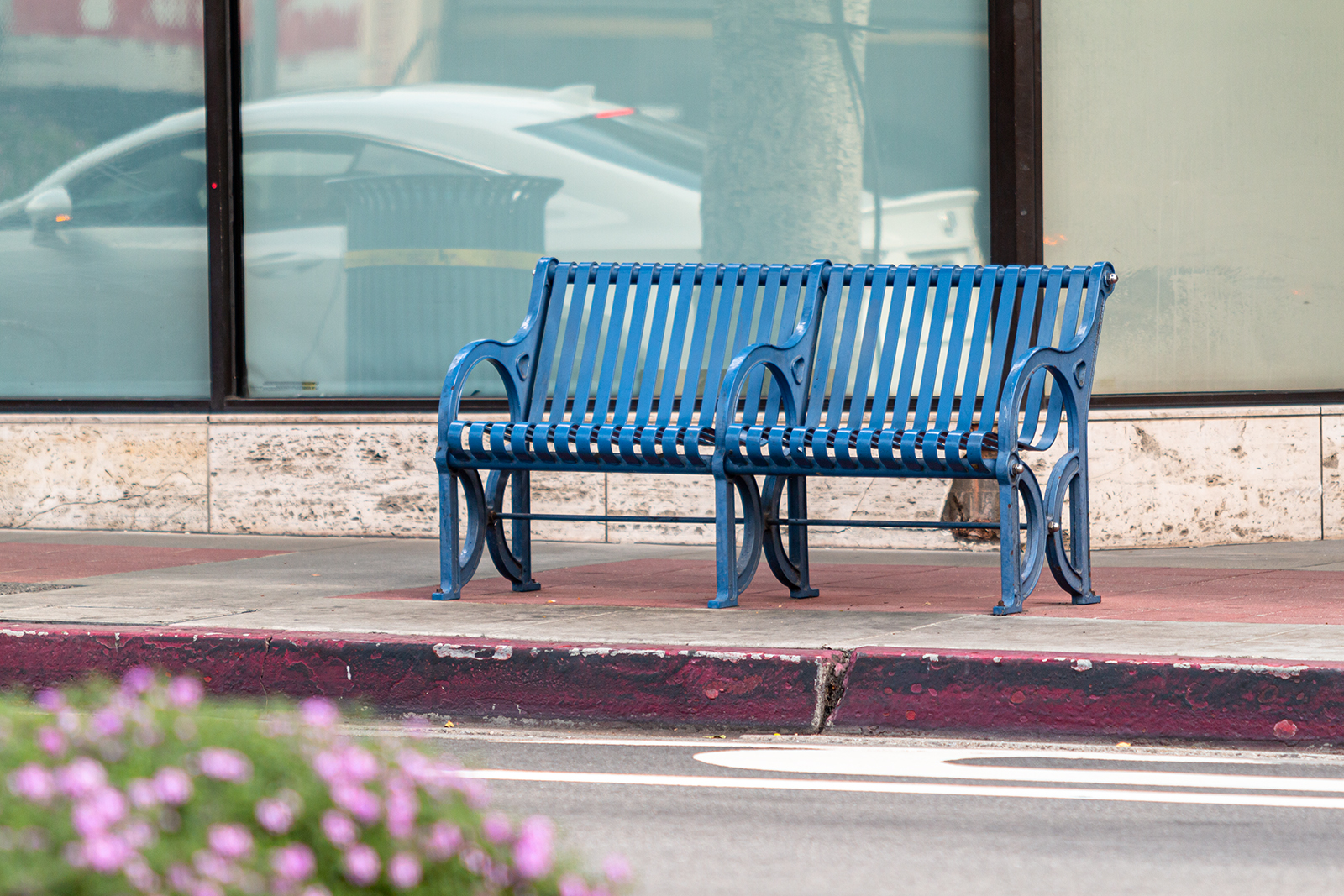Hana: NWWNC should vote to remove hostile architecture in upcoming meeting

Hostile architecture unintentionally discourages the use of public spaces. The North Westwood Neighborhood Council should vote to remove this architecture and focus its efforts on financially supporting the homeless community throughout Westwood. (Keaton Larson/Daily Bruin)

By Angela Hana
Jan. 29, 2020 11:57 p.m.
This post was updated Feb. 8 at 1:20 p.m.
Armrests and urban planters may look nice to the average pedestrian.
But when architecture serves only to privatize public spaces, it’s not as pretty as it seems.
And that’s exactly what hostile architecture does. As a form of urban design that discourages the use of public spaces in ways designers did not initially intend, hostile architecture often targets individuals experiencing homelessness.
After two years of discussions and community criticism, the North Westwood Neighborhood Council will be deciding whether bench dividers, perceived as armrests, should be removed from nontransit city benches in Westwood at its next meeting Wednesday.
This type of anti-homelessness design is often motivated by safety concerns and attempts at crime prevention, despite debates about its effectiveness in doing so.
This isn’t the first time cities have received criticism for architecture designed to keep the public uncomfortable. But with 142 individuals experiencing homelessness in Westwood in 2019, the problems with this type of design are increasingly apparent.
These numbers are hardly surprising. Through-the-roof rent prices have forced students to sleep in body-sized pods, and UCLA’s housing developments are barely established – much less are developments for low-income, nonstudent residents.
But instead of investing in social services or shelters, Los Angeles has invested in hostile infrastructure – and it’s costing all parties involved.
The NWWNC should vote to revoke hostile architecture by removing the nontransit bench dividers and focusing its legal and financial efforts on providing adequate housing and resources to the homeless community in Westwood. The council has a homelessness task force created to help these individuals – but when it fails to provide sufficient alternatives to public spaces, it’s unethical to make existing spaces inhospitable.
And it’s a problem beyond the boundaries of Westwood. In 2019, there were between 50,000 and 60,000 individuals experiencing homelessness living in LA County. Homelessness increased citywide by 16% between 2018 and 2019.
But architecture designed to deter homelessness is set on the wrong target. These demographics are not the root cause of safety issues in LA County, and costly urban planning initiatives to keep them out will do little to solve widespread housing insecurity in the county.
And it is costly – for example, in St. Louis, bench dividers similar to those in LA cost around $8.65 each and each bench gets two dividers. But despite the price, LA County continues to antagonize individuals who generally pose no threat.
Gary Blasi, a UCLA law professor emeritus, said unsheltered individuals experiencing homelessness are no more likely to commit any significant crime than sheltered individuals who are of the same socioeconomic status.
“When people talk about safety, they are generally talking about the stereotype of homeless people as being dangerous, especially when those homeless people are black men,” Blasi said.
And when the NWWNC has talked about safety previously, it always seemed to prioritize a certain demographic of the community – that is, those who could afford a roof over their heads.
Michael Skiles, president of the NWWNC, said that as long as there isn’t a place for people experiencing homelessness to live in a dignified way, then it is wrong to criminalize them.
“I think hostile design becomes particularly pernicious when a community doesn’t have anything for members of the community experiencing homelessness,” Skiles said.
Individuals may not choose to be homeless.
Fortunately, officials can choose to help them during next week’s NWWNC meeting.
Privatizing public spaces only exacerbates the issue of homelessness without offering any alternative – if people experiencing homelessness have nowhere else to go, it further stresses the need for funding and resources in the long run. Instead, financial and legal efforts need to be made to create solutions, such as offering adequate public resources and affordable housing.
Gustavo Leclerc, a doctoral candidate in architecture and the associate director of cityLAB Urban Humanities Initiative, said public areas shouldn’t be restricted to anyone and should serve as democratic spaces where everyone is welcome, regardless of their condition.
“It’s imperative that we start to switch the focus – putting all the creative, innovative, economic, social, cultural, infrastructural resources into solving the problem of affordable housing,” Leclerc said. “We have the talent; we have the knowledge; we have the economy.”
To make matters worse, the act of even resting on barred-off benches is cause for potential arrest. The Los Angeles Municipal Code section 41.18 makes it a criminal offense to “sit, lie or sleep” on a public sidewalk anywhere in Los Angeles, which may extend to public benches.
By criminalizing the presence and behavior of people experience homelessness, LA County threatens people’s ability to assert and claim their rights in the public sphere. It is unjust to deny individuals their right to live comfortably in a county that systematically fails to accommodate them.
“Enshrined deeply in the Constitution of this country is the basic principle that everyone has the right to live, and in order to live, you need to be able to live somewhere,” Skiles said. “You need some form of shelter.”
Of course, private businesses in Westwood may favor hostile design because it provides them with a sense of security without the fear of loitering by individuals experiencing homelessness. But that sense of security is false. Not only is hostile infrastructure often harmful and aesthetically displeasing, options such as urban planning with a focus on visibility and good maintenance have been shown to help effectively deter crime in a much more productive way.
Hostile infrastructure cannot solve the issue of homelessness – instead, it only further antagonizes an existing crisis.
This architecture may be built into the existing design of Westwood.
But as of next week, the NWWNC will have an opportunity to change that.

